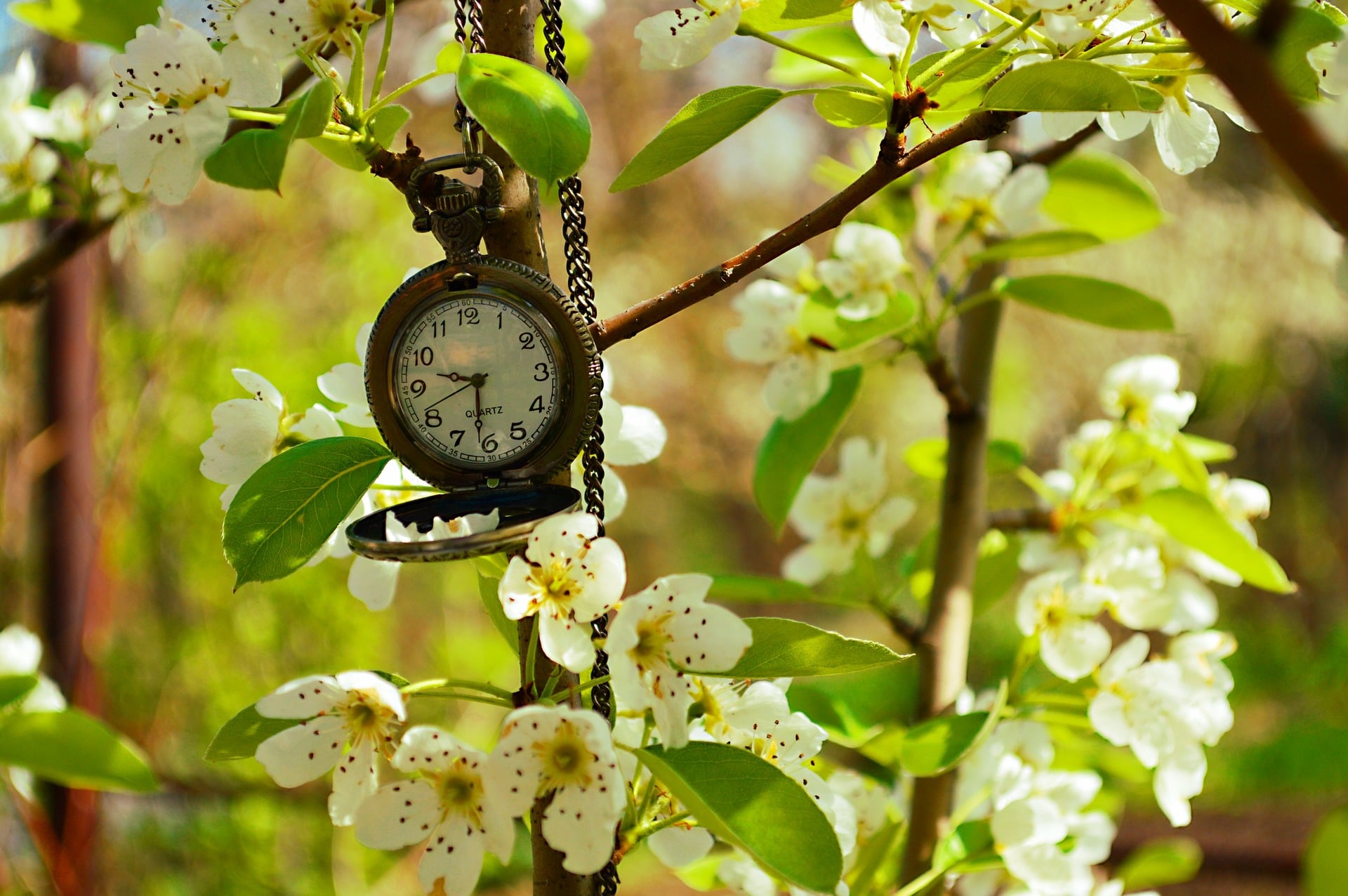Each spring, the people of Britain lose an hour of sleep and find themselves needing to turn their clocks and watches forward by an hour. This strange ritual is commonplace now, but it is actually a relatively new concept. Most people have heard or uttered the phrase “spring forward, fall back”, but many do not realise how this came to be. The clocks go forward on Sunday 28th March in 2021, so keep reading to learn about the history of daylight saving time and how to change the time on your wristwatch.
Where Did Daylight Saving Time Originate From?
Daylight Saving Time in the UK, also often referred to as British Summer Time, is the invention of a builder named William Willet, from Kent. The story states that Willet was riding his horse around his hometown near Petts Wood when he noticed that many of the houses had their curtains drawn despite the fact it was still bright outside. This sparked his imagination, and he began thinking of ways that Britain could make better use of daylight. Willet believed that maximising daylight would improve people’s heath, aid recreation, and save people money that they would normally be spending on lighting costs.
Prior to Willet’s revelation, the clocks were set to Greenwich Mean Time all year. This is the time used in the wintertime now. This meant that in summer, it would begin to get light at around 3am and it would get dark again around 9pm. Many hours of daylight were being wasted as the population slept.
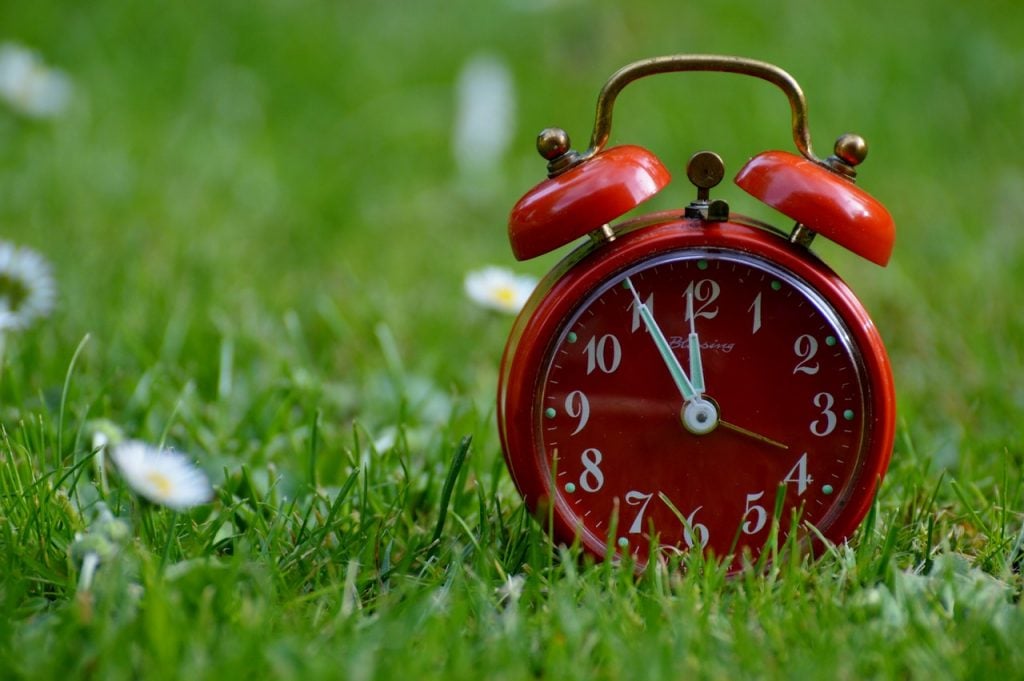
Although Willet was not the first to consider this concept, he was the most persistent and so his name is commonly associated with the cause. Willet decided that the best course of action would be to use his own money to fund a pamphlet he had written, titled “The Waste of Daylight”. It was hoped that the British population would read this and consider changing how they used their time. Willet promoted the idea of putting the clocks forward by 80 minutes in total. He advised that this should be done in 20-minute increments, every Sunday at 2am, throughout the month of April. Willet recommended that the clocks be turned back using the same methods through the month of September.
Willet’s proposal was put forward in the House of Commons, but the bid was unsuccessful. Sadly, Willet passed away in 1915 and therefore did not live to see his great plan come to fruition a few years later.
How Did Daylight Saving Time Come to be Common Practice?

During the initial push for Daylight Saving Time, the British population was very much against Willet’s proposal. It was thought that it was unsafe to manufacture dark winter mornings and that the whole event would be an inconvenience for a huge number of people. However, Willet’s concept was revisited during the First World War, a time when it was necessary to conserve coal. As the British people were trying to ration their fuel, it was now a more widely accepted idea to change the clocks in order to make better use of daylight hours. The Summertime Act was eventually passed on the 17th May 1916.
The clocks of the early 1900s did not cope well with being turned backwards and this action could break the mechanism. When October came, and it was time to turn the clocks back to GMT again, the population was advised to instead turn their clocks forward by 11 hours.
Despite initially expressing negative opinions towards British Summer Time , the British population seemed to warm to the idea as during the Second World War, Britain adopted British Double Summer Time. This meant that the clocks were put forward two hours ahead of Greenwich Mean Time. This peculiarity had to occur again in 1947 when Britain once again faced severe fuel shortages.
How to Change the Time on Your Wristwatch
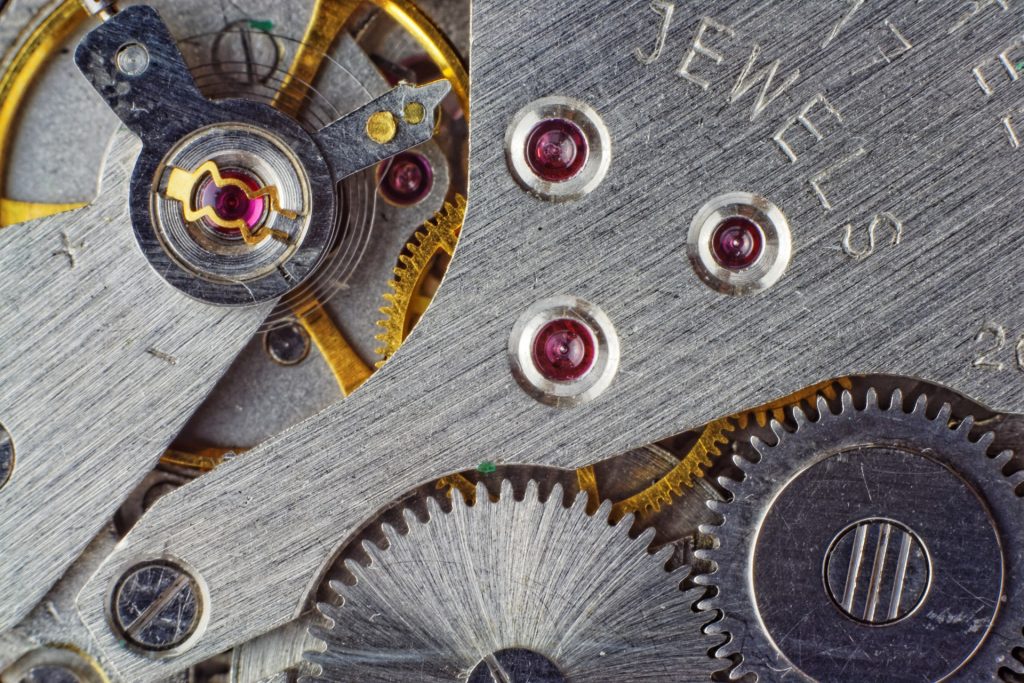
Fortunately, most time-telling devices, such as phones and computers, are capable of adjusting between Daylight Saving Time and Greenwich Mean Time on their own. However, analogue timepieces need to be adjusted manually. Although it may seem a simple task, it is always best to check the instructions provided by the manufacturer of a watch to prevent any accidental damage to the movement.
The process of changing the time is fairly universal for most mechanical watches. First, the crown should be pulled out into the second position. It should be unscrewed first if necessary. Then, the crown should be turned so that it moves the hands clockwise. In some cases, if the hands are moved anti-clockwise, it can damage the movement. If the watch that is being adjusted features a date aperture, it is necessary to turn the hour hand once beyond noon for times past 12pm. If this care is not taken, the date is likely to change prematurely at midday.
Watch Recommendations for Transitioning into Spring
Citizen Women’s Eco-Drive Chronograph Bracelet FB1444-56D
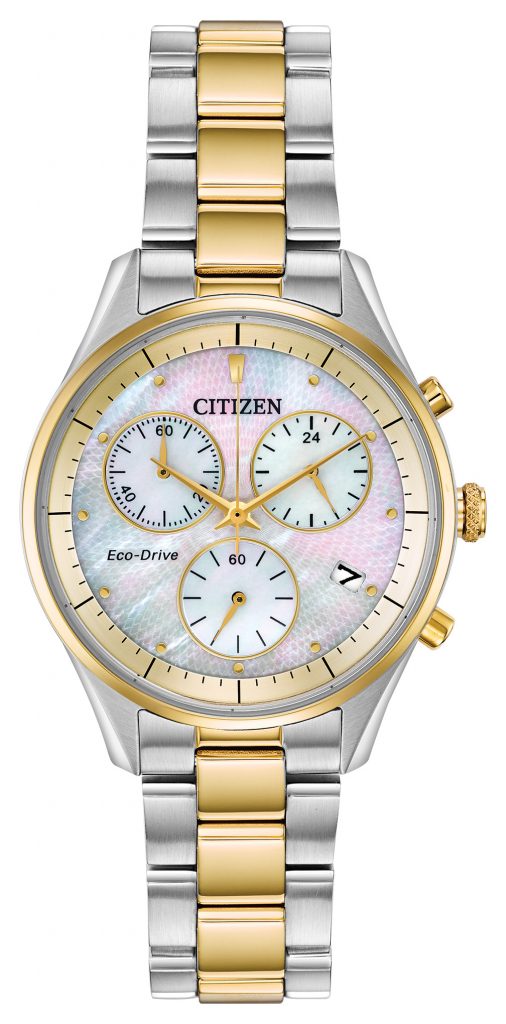
This ladies’ model from Citizen has an eye-catching two-tone gold PVD coated stainless steel case and matching bracelet. The shimmering mother-of-pearl dial is protected by mineral crystal, secured in the 32mm case. The dial features a date aperture, gold indices and gold hands, to elegantly keep track of all timekeeping necessities. This model has some splash resistance, so it is able to withstand the small amounts of water it may encounter with daily wear. This model is great for transitioning into springtime due to its dual-colour bracelet which ensures it will match any outfit.
Daylight Saving Time is focused on making the most of the light, and this watch does exactly the same thing. Eco-Drive watches feature solar cells that harvest light and store it, ready to convert into energy to power the watch. This model will thrive throughout British Summer Time as it will be getting plenty of light to keep the hands ticking, ensuring the watch remains precise and reliable all year round.
Rotary Mens Henley GMT Green Dial Stainless Steel Bracelet GB05176/24
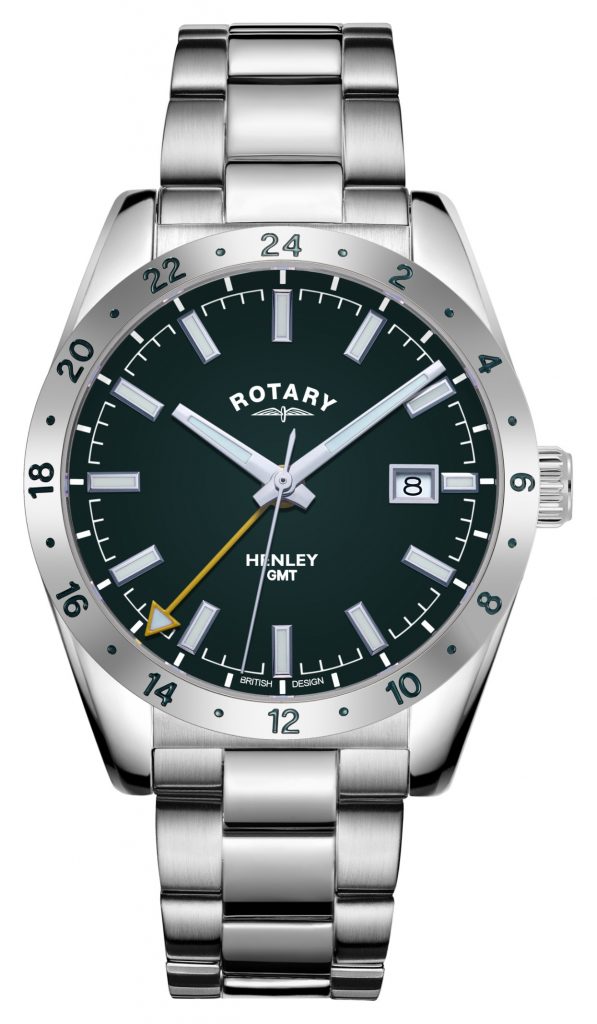
This wallet-friendly Henley model from Rotary would make an excellent first watch due to its simple, elegant look. The watch has a classic stainless-steel bracelet with matching silver baton indices and hands. The Henley collection is focused on creating elegant and simple design in high quality watches, and this model certainly encompasses this. However, the dial does feature some additional utilities in the form of a date aperture and a bezel with a 24-hour index. An additional yellow hand indicates a second time zone using the bezel. This makes it easy to keep track of multiple time zones, even in the season of Daylight-Saving Time. The watch’s simple design features a moss green dial, ready to wear into the fresh start of springtime. The unusually coloured dial makes this model eye-catching. It is a great addition to this budget-friendly quartz powered watch.
Coach Perry Women’s Pink Calf Skin Leather Strap Floral Dial 14503770

Florals are a staple of styling watches for Spring. This model from Coach is pretty and elegant, but subtle enough for everyday styling despite its pattern. The bottom half of the white dial features a floral pattern in shades of pink, adding a touch of interest to the watch. The pattern is complemented by rose gold detailing that matches the rose gold indices and hands. The dial is framed by a rose gold coloured case, giving this model a cohesive look. The watch is finished with a pink leather strap. This striking model is a pretty and feminine watch choice, perfect for the spring and summer season. It is made eye-catching by its pattern and colour, but the subdued shades make it easy to pair with any outfit.
Sinn Perfect Elegance 1736 1736.011
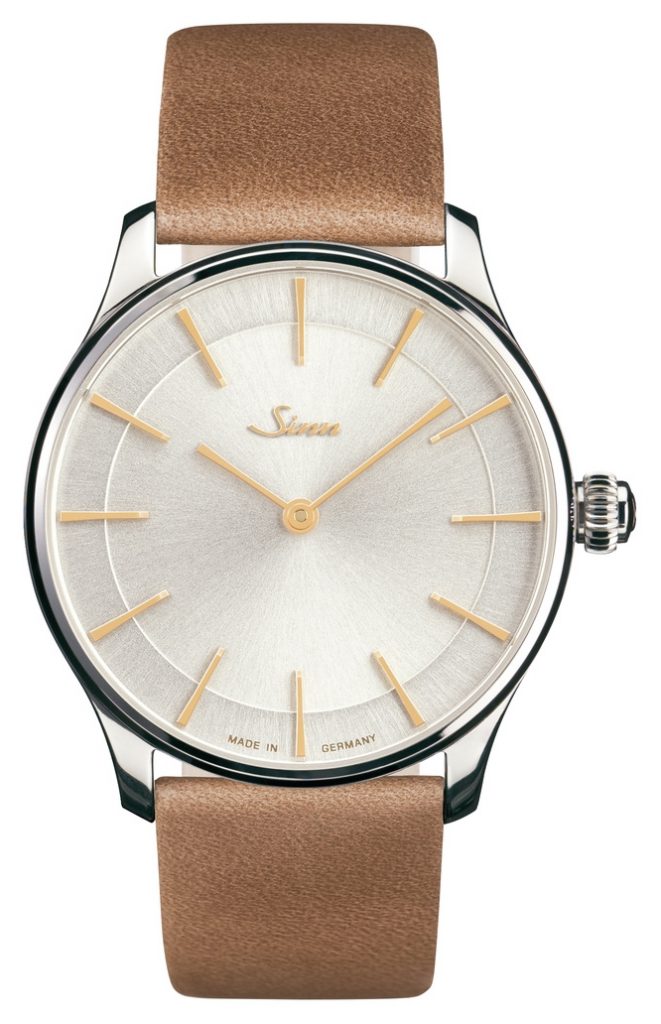
This Sinn model would make a great addition to a pre-existing watch collection. Sinn are known for using the highest quality materials and finest German engineering in order to create the highest performing timepieces possible. This model is part of Sinn’s 1736 collection which revolves around elegant and minimalistic watches with simple dials. This watch has a silver electroplated dial with sunburst detailing, reminding the wearer to celebrate the extra daylight hours during Daylight Saving Time. A stainless-steel case frames the dial, and the indices and hands are gold plated. The multi-tonal look of the watch ensures it will match any outfit or accessories that are paired with it. The watch is finished with a golden-brown calfskin leather strap, giving the watch an elegant, classic look. This model is powered by an ETA 2892-A2 self-winding mechanism which uses 21 bearing jewels and 28,800 semi-oscillations per hour to power the watch. This movement is very reliable and precise, so the wearer only has to remember to turn the watch forward in Spring, and the mechanism will take care of the rest.
What did you think of the history of daylight saving time? Would you prefer it if we didn’t have to change the clocks twice a year? Will you be adding any of our recommendations to your collection? Let us know in the comments below!

